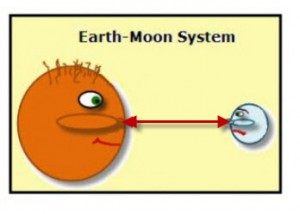 Astronomy Questions for Science Projects
Astronomy Questions for Science Projects
The independent variable and a dependent variable for each question is identified.
1. As viewed from Earth, how does a celestial body’s distance from Earth affect its apparent diameter?
Independent variable: distance from Earth
Dependent variable: apparent diameter of celestial bodies
2. How does Earth’s position in its orbit about the Sun affect the Sun’s horizon setting position?
Independent variable: Earth’s position
Dependent variable: the Sun’s horizon setting position
3. How does the Sun’s sky position affect the length of Sun shadows?
Independent variable: position of the Sun (determined by passing of time measured in minutes or hours)
Dependent variable: length of Sun shadows
Caution: Do not look directly at the Sun because it can permanently damage your eyes.
4. How does the position of the Sun in the sky during the day affect the direction of Sun shadows?
Independent variable: position of Sun (determined by passing of time measured in minutes or hours)
Dependent variable: direction of Sun shadows
5.What effect does the Sun’s apparent sky position have on the concentration of solar energy?
Independent variable: Sun’s apparent sky position (measured by time)
Dependent variable: energy concentration (measured by shadow length)
6. What effect does the azimuth of the rising Moon during a lunar month have on moon phases?
Independent variable: azimuth of the rising Moon
Dependent variable: moon phases
7. How does the Moon’s revolution about Earth affect its sky position in relation to the stars?
Independent variable: amount of revolution (determined by passing of time measured in hours)
Dependent variable: the Moon’s sky position in relation to the stars
8. How does the amount of light pollution affect the visibility of stars?
Independent variable: amount of light pollution (design a scale, such as 0 is no light and 10 is the lights of a large city)
Dependent variable: degree of visibility
9. How does distance affect the apparent magnitude of stars with equal luminosity?
Independent variable: star distance
Dependent variable: apparent magnitude
10. How does Earth’s rotation affect the position of stars in a constellation in relation to each other?
Independent variable: Earth’s rotation (determined by passing of time measured in minutes or hours)
Dependent variable: star position
11. What effect does the period of rotation of the planets have on their polar and equatorial diameters?
Independent variable: planet rotation speed (use models rotating at different speeds)
Dependent variable: polar and equatorial diameters
12. What effect does the distance of a planet from the Sun have on its period of rotation?
Independent variable: distance of a planet from the Sun (use models with different distance rotating at the lowest speed that keeps them going)
Dependent variable: period of rotation
13. What effect does the rotation of Earth around the Sun have on the position of the setting Sun?
Independent variable: amount of rotation (determined by the passing of time measured in days)
Dependent variable: location (azimuth) of setting Sun on the horizon
14. What affect does the color of a material have on it absorption of solar energy?
Independent variable: color of material
Dependent variable: absorption of solar energy (measured by an increase in temperature)
15. What effect does the texture of a surface have on the absorption of solar energy?
Independent variable: surface texture
Dependent variable: absorption of solar energy (measured by an increase in temperature)
Guide to the Best Science Fair Projects
(Paid Link)
